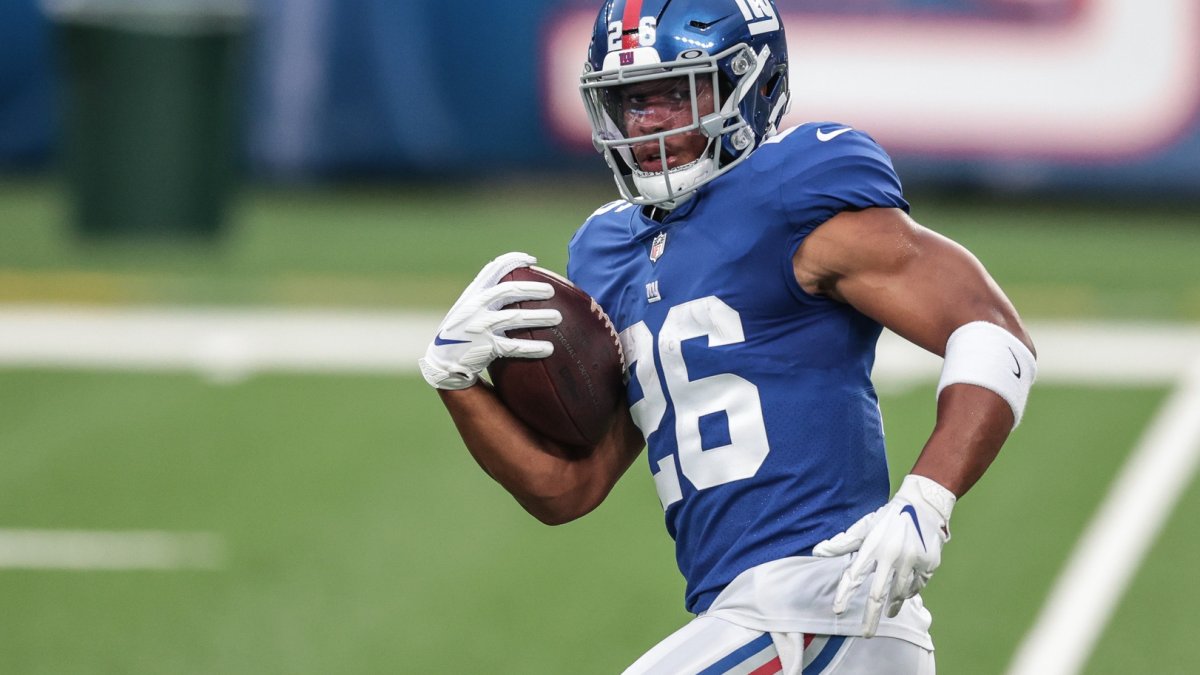We’re in the thick of the NFL offseason and it’s officially time to start fantasy football prep. I’ll be answering the biggest questions heading into the 2021 season. Click here to read the series of questions answered so far.
The unfortunate reality of the NFL’s salary cap environment is that teams are forced to make tougher decisions financially than they would have to in a pure open market. The idea that running backs don’t matter is thus only true because the position 1) is extremely reliant on teammates, and 2) has historically seen more high-end, late-round producers than other spots, so teams are incentivized to spend more money elsewhere. There are some valid concerns about parity between big and small markets, but at the end of the day the salary cap serves as a rather arbitrary disservice for what NFL players are able to make.
Moral of the story: If someone wants to pay an exceptional talent like Saquon Barkley a billion dollars to play for their football team, why should that be a problem? Running backs are heralded at all amateur levels of football because they touch the ball more than any position other than the QB and make plays; there’s a reason why so many NFL studs on both sides of the ball were featured in the backfield in high school. The best colleges recruit the best RBs available, because why wouldn’t they? It’s only at the professional level when teams have an imaginary threshold placed on their spending that the position starts to get slandered.
Should the Giants have used the 2018 NFL draft’s No. 2 overall pick on Barkley? No, but that doesn’t mean we need to treat one of college football’s greatest talents to play the position like some sort of mistake. You don’t need more than one hand to count the number of backs that have been better than Barkley over the past three seasons — at least the glorious American pastime known as fantasy football is able to fully appreciate him as one of the best players in the league.
What follows is a breakdown on just how special Barkley has been during his short career and what we should expect from him as a fantasy football asset in 2021.
Barkley’s start to his career has been borderline erotic
Nobody gained more total yards from scrimmage than Barkley (2,028) as a rookie in 2018. He also found the end zone on 15 separate occasions courtesy of 261-1307-11 rushing and 91-721-4 receiving lines. The NFL’s leader in broken tackles, Barkley went about his business in style with enough jukes, hurdles and spins to make a fantasy investor go from six to midnight in a hurry.
The encore wasn’t quite as special as the original, although Barkley’s 217-1003-6 rushing and 52-438-2 receiving lines in 13 games demonstrated the reality that he was still a force to be reckoned with. This production was particularly impressive considering Barkley suffered a nasty high ankle sprain in Week 3 and somehow only missed three games; the man is truly built different.
Remember that Saquon Barkley guypic.twitter.com/QZ2lQc58KS
— Ian Hartitz (@Ihartitz) April 1, 2021
I maintain that at full health Barkley should be considered Earth’s RB1 in a potential winner-takes-all game against the aliens if the situation ever arises. It’s tough to pinpoint a real hole in Barkley’s game as both a rusher and receiver; he was anyone’s idea of at least a top-10 RB during the 2018-2019 seasons in terms of most efficiency and counting stats. Critiques that Barkley gets stuffed on too many of his runs before breaking off big chunks simply aren’t as based in reality as many think; his 9.2% stuff rate (carries that went for negative or zero yards) comes in at 40th among 75 qualified RBs during the 2018-2019 season.
The 2020 edition of Saquon was only on the field for 67 plays before suffering a torn ACL. The Steelers limited him to just 66 total yards on 21 touches, while his four carries against the Bears went for a more than solid 28 yards. Fantasy investors were certainly devastated by the injury, and we came to find out that this wasn’t exactly an offense that any RB was capable of thriving in.
Exclusive content for premium subscribers

WANT TO KEEP READING?
Dominate Fantasy Football & Betting with AI-Powered Data & Tools Trusted By All 32 Teams
Already have a subscription? Log in



 © 2025 PFF - all rights reserved.
© 2025 PFF - all rights reserved.